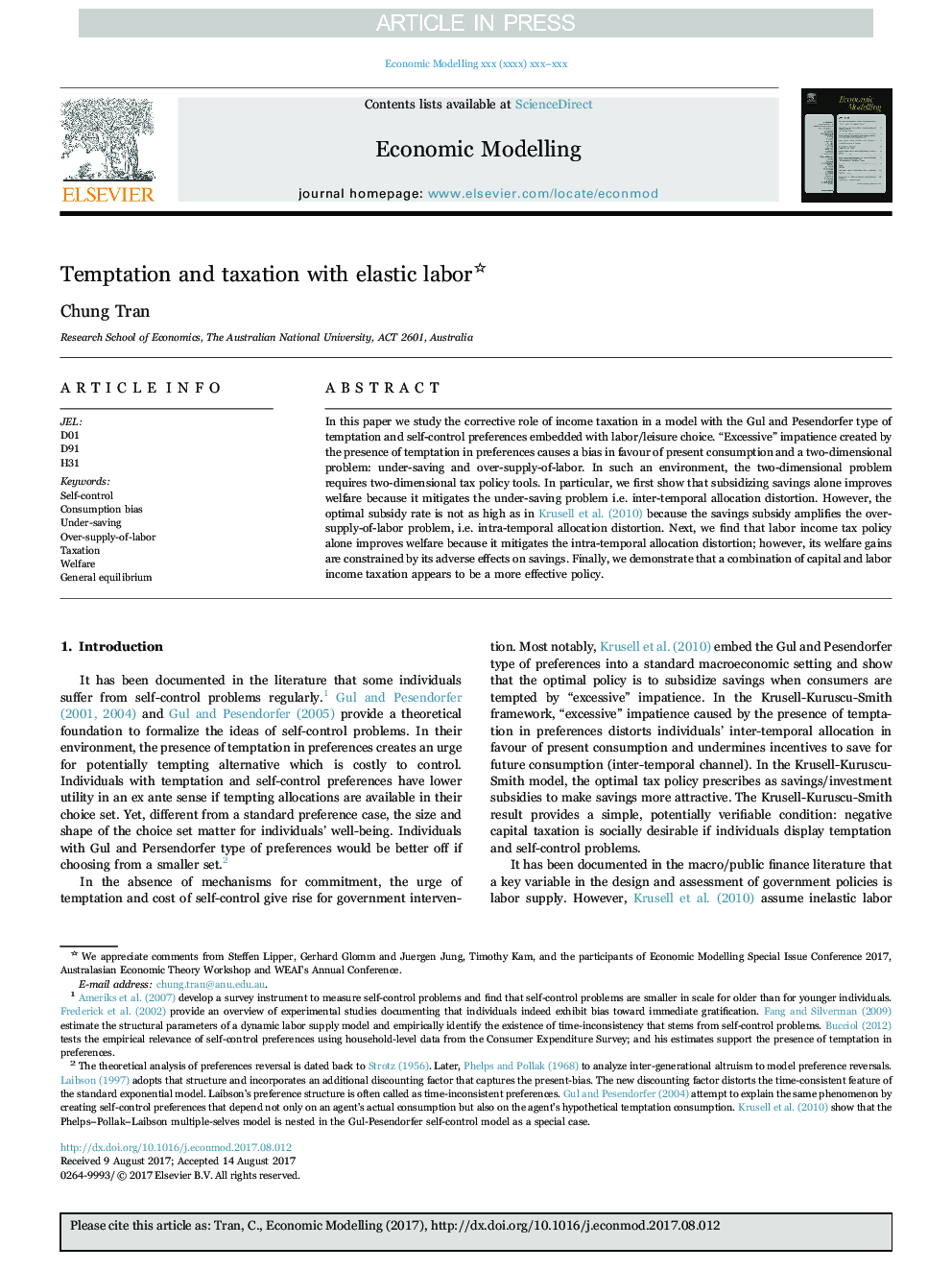| Article ID | Journal | Published Year | Pages | File Type |
|---|---|---|---|---|
| 7347280 | Economic Modelling | 2018 | 19 Pages |
Abstract
In this paper we study the corrective role of income taxation in a model with the Gul and Pesendorfer type of temptation and self-control preferences embedded with labor/leisure choice. “Excessive” impatience created by the presence of temptation in preferences causes a bias in favour of present consumption and a two-dimensional problem: under-saving and over-supply-of-labor. In such an environment, the two-dimensional problem requires two-dimensional tax policy tools. In particular, we first show that subsidizing savings alone improves welfare because it mitigates the under-saving problem i.e. inter-temporal allocation distortion. However, the optimal subsidy rate is not as high as in Krusell et al. (2010) because the savings subsidy amplifies the over-supply-of-labor problem, i.e. intra-temporal allocation distortion. Next, we find that labor income tax policy alone improves welfare because it mitigates the intra-temporal allocation distortion; however, its welfare gains are constrained by its adverse effects on savings. Finally, we demonstrate that a combination of capital and labor income taxation appears to be a more effective policy.
Related Topics
Social Sciences and Humanities
Economics, Econometrics and Finance
Economics and Econometrics
Authors
Chung Tran,
